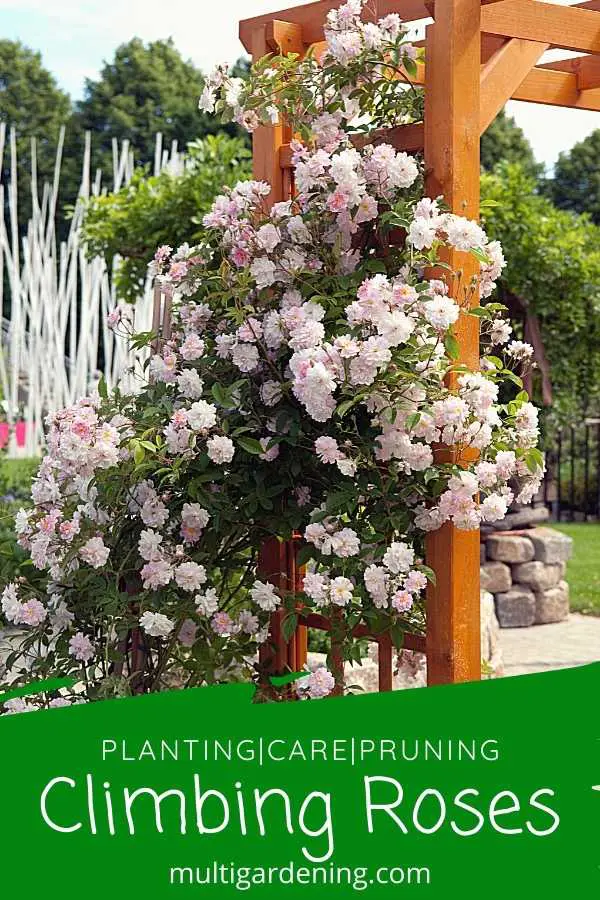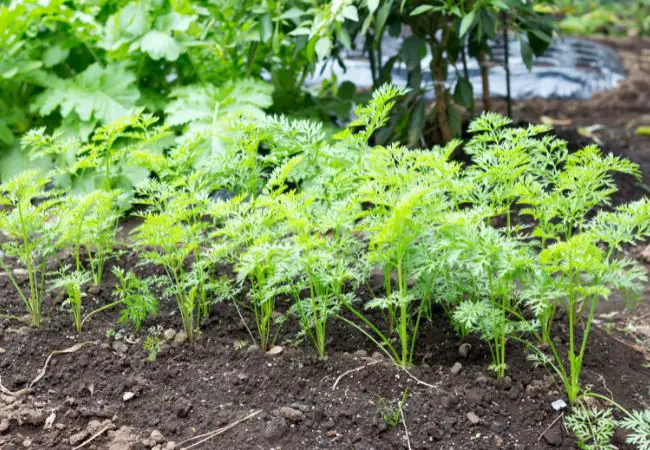Climbing Roses Planting and Care

Climbing roses planting and care guide that will help your grow strong and healthy roses. Climbing Roses are ideal plants for trellis, fences, pillars, gazebos, and walls. They produce gorgeous rose flowers that can be found in a wide range of hues and shades. You can get them in various shades of yellow, cream, pink, peach, white, orange, and purple. Even though they are an excellent plant choice for people looking for climbing plants, they will not perform well if they don’t receive proper planting and care.
Varieties of Climbing Roses
There are many varieties of Climbing roses. You can train them to grow and cover any space to give you that stunning look. The common ones include:
- The peace rose which is one of the most common roses in the world. It produces large scented flowers either in yellow or pink.
- Dublin Bay Rose which is mildly scented and produces medium-sized rose flowers.
- American Beauty which is a hybrid tea rose that produces dark pink rose flowers.
- Rosa Altissimo which produces small buds that blossom into single flowers with bright red petals.
- Cecile Brunner Rose which is a heavily scented hybrid rose that produces blush-pinkish rose flowers.
- Fourth of July which produces large scented blooms. The flowers have red and white stripes.
Light
Most Climbing Roses love full sun. This is one of the aspects that makes them ideal for growing outside even under direct sun. The light flowers require at least five hours of sun every day.
While picking an area, guarantee it gets adequate light for your roses to progress nicely. If you don’t have a ton of direct light you can still try to grow them under the shade and see what happens.
Soil
Climbing roses can be grown successfully in an area with depleted soils. The dirt can be improved with limited quantities of manure or natural soil enhancers.
The roses don’t do well in rough soil. If the main space you have is excessively rough, you can make wide holes and fill them with enough dirt before setting up the plants.
The soil type is not an issue with Climbing roses as long as it’s well-draining.
Planting Climbing Roses
When you have chosen your ideal site, you will need to dig planting holes. These holes ought to be double the measurement of the root ball and one and a half times the height.
Mix the dirt with your manure or natural soil enhancer. The quantity manure or natural enhancer you use will depend on the state of soil where you are planting the roses.
Remove the rose plant from its nursery pot. If the plant is root bound, it is advisable to loosen them so that the plant does not adopt this style of growth in its new location.
Cut the root ball vertically all-around utilizing a sharp blade. Use your hands to loosen the root. Be careful not to cause too much damage.
When you are satisfied, position the rosebush in the planting opening. Ensure that the bud association or the crown is around two inches underneath the first ground level.
Cover the root ball with the dirt you have prepared on the side. Press down around the plant and firm the dirt with your hands or foot.
After you ensure that your plant is firmly planted and standing straight, you should give it a good soaking.
Watering
The new Climbing roses should ideally be watered every other day during the growing months. Watering frequency should be reduced during the cooler months.
After the plants are fully established, water the roses like you would all other different plants in the garden. Check the top inches and when they are dry, water them.
Deadheading Climbing Roses
Deadheading is important for rose gardeners. When eliminating spent blossoms from a Climbing Roses, removed the bloom stem. If the stems still have flowers that are not spent, you can remove only the spent ones and leave the fresh flowers.
All types of deadheading ought to be finished by September. This signals to the rose plant to begin slowing down for the winter season.
Fertilizing
The most ideal approach to feed your Climbing roses is through the use of natural composts. These kinds of composts will be helpful and useful when applied as the plant develops in the spring.
These manures ought to be worked into the dirt around the plant where the roots can reach the nutrients.
Mulching
Following planting, you should apply around two inches of mulch. Applying mulch to your plants is helpful: it provides nutrients, helps control weeds, preserves moisture, and helps keep the roots cool.
Sicknesses and Pests
A wide range of roses including Climbing roses is easily attacked by pests and illnesses. Managing pests and diseases is an important part of Climbing Roses planting and care.
One of the diseases to look out for is Black Spots. The second disease is powdery mildew which is a fungal plant disease.
The fungal diseases are not a huge issue with reclaimers or shrub roses. But, they are a plague, particularly to Floribundas and Hybrid Tea roses.
Many gardeners including myself, have found great success with taking preventative measures rather than waiting for the roses to be attacked.
Severe attacks will cause the Climbing roses to lose heaps of foliage and stop blossoming. The most ideal approach is to apply fungicides such as Bi-carb with Fung-Onil.
Common pests including spider mites, aphids, and thrips also attack Climbing roses. Most of these pests can be effectively controlled using neem oil or insecticidal soap.
Pruning Climbing Roses
Pruning Climbing roses should be done every year. The pruning process helps keep the climbers from overwhelming their supports.
Pruning should be done mid to late winter when the plant is dormant. Begin by removing any branches that are diseased or broken. Also, remove any branches that are awkward or crossing too much.
Also, cut back any branches that have outgrown their support. Climbing roses flower twice, first on the old wood and the second on new wood.
Next Season
The following season starts during Spring. During late March cut off all dead wood from Climbing rose. This is also the best time to begin fertilizing to support the growth that will happen during the warm months.
You should also begin your routine of pest and disease protection. Additionally, start to bit by bit remove the mulch covering at the base. Start in April and have the mulch uncovered halfway through the month.
Simple Climbing Rose Growing Tips
- Completely soak the dirt when watering.
- Choose a location that receives at least 5 to 6 hours of sun for every day, avoid locations with too much shade.
- Apply pesticides late evening when the honey bees and different pollinators are absent.
- Add compost to your soil to improve nutrient levels.
- Deadhead spent blossoms throughout the growing season to prevent diseases and pests from spreading.
- Prevent disease attacks by preventing them rather than waiting for infections and trying to treat them.
- Train your Climbing roses as the stems grow, so that they can cover the wall, trellis, post, or pillar properly.
Final Thoughts
Climbing roses are magnificent plants particularly for gardeners who love rose blooms. Providing your Climbing roses with the proper care will allow you to enjoy them for many years.
I love climbing roses because not only will you enjoy them as they grow outside, but you can cut them and include them in various floral designs.
Am hoping you found this post on Climbing roses planting and care helpful. Please, share it with others, am certain somebody will welcome the information. Also, follow me on Pinterest for more helpful posts on flower gardening.






